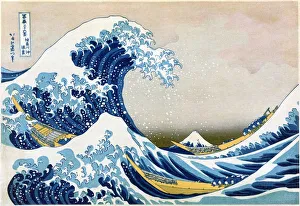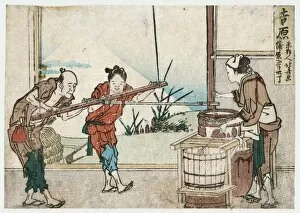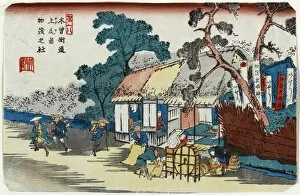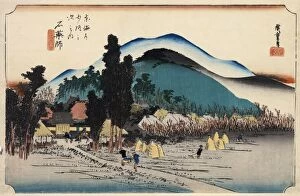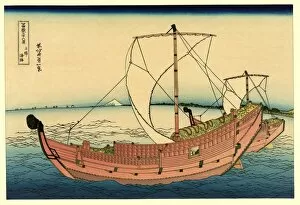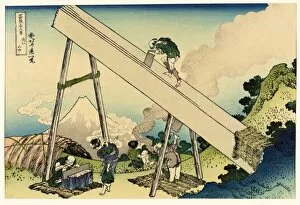Ukiyo E Art Collection
Ukiyo-e art, a captivating genre of Japanese woodblock prints, offers a window into the vibrant and dynamic culture of Edo period Japan (1615-1868
All Professionally Made to Order for Quick Shipping
Ukiyo-e art, a captivating genre of Japanese woodblock prints, offers a window into the vibrant and dynamic culture of Edo period Japan (1615-1868). These prints depict various aspects of daily life, landscapes, and natural phenomena with exquisite detail and artistic finesse. One iconic masterpiece that epitomizes ukiyo-e is "The Great Wave off Kanagawa. " Created by Katsushika Hokusai in 1831, this print showcases the immense power and beauty of nature as towering waves threaten to engulf small boats beneath Mount Fuji's majestic presence. Another notable work is "Waterwheels at Onden" from 1752. This print captures the industrious spirit of Edo-era Japan as waterwheels churn tirelessly to power mills along riversides. "Beneath Mannen Bridge, Fukagawa" transports us back to 1730s Tokyo, revealing bustling scenes along riverbanks where people go about their daily activities amidst charming wooden bridges. In "Kajikazawa in Kai Province, " created in 1671 by Ando Hiroshige I, we witness the artist's mastery in depicting serene landscapes. The print showcases a tranquil mountain village nestled among lush greenery—a true feast for the eyes. For glimpses into social life during this era, "Two Ladies" presents elegant women adorned in traditional attire engaging in leisurely conversation or enjoying tea ceremonies—an embodiment of grace and refinement prevalent during those times. Art enthusiasts are also captivated by works like "View of Mount Fuji from Nihonbashi, " which portrays an iconic view point showcasing both urban development and natural splendor harmoniously coexisting. Ukiyo-e artists didn't shy away from highlighting everyday industries either. Prints such as "Silk production" (2023), "Salt gathering at Suzaki, " or even depictions like "Paper-making" (2021) offer insights into the intricate processes and craftsmanship behind these essential trades.

